Case Studies.
Add Case Study
Our Case Study database tracks 22,657 case studies in the global enterprise technology ecosystem.
Filters allow you to explore case studies quickly and efficiently.
Download Excel
Filters
-
(6,653)
- (2,601)
- (2,127)
- (945)
- View all
-
(5,642)
- (2,469)
- (1,692)
- (826)
- View all
-
(5,571)
- (2,178)
- (1,766)
- (643)
- View all
-
(5,247)
- (2,179)
- (1,715)
- (1,321)
- View all
-
(2,881)
- (1,448)
- (574)
- (376)
- View all
- View all 15 Technologies
- (1,985)
- (1,985)
- (1,915)
- (1,679)
- (1,629)
- View all 42 Industries
- (8,728)
- (4,742)
- (3,618)
- (3,233)
- (2,947)
- View all 13 Functional Areas
- (3,304)
- (2,787)
- (2,603)
- (2,006)
- (1,630)
- View all 129 Use Cases
- (13,581)
- (5,296)
- (4,272)
- (3,520)
- (2,856)
- View all 9 Services
- (504)
- (432)
- (416)
- (382)
- (301)
- View all 1083 Suppliers
Selected Filters

|
Almundo's Transformation: Enhancing Collaborative Work with Google Workspace
Almundo, a leading travel technology company and omnichannel agency, was facing a challenge in transforming its ecosystem into a more collaborative model. With operations expanding throughout Latin America, the company had over 800 professionals and more than 330 travel experts working in various areas of the business. The goal was to create a more coordinated work environment that would have a positive impact on productivity. However, the company was relying on legacy tools that were not conducive to collaborative work, distributed access, and productivity of work teams. The challenge was to find a solution that would meet these specific requirements and help the company maintain its leadership position in Latin America.
|
|
|

|
ARIGATOBANK: Leveraging Google Cloud for Scalable Donation Platform
ARIGATOBANK Inc., a Tokyo-based financial services business, operates a platform called kifutown that connects donors with those in need of financial aid. The platform has grown significantly, handling over 2,000 donation projects as of March 2022. However, the company faced challenges in managing sudden traffic surges, particularly due to the influence of high-profile shareholder Yusaku Maezawa. A single social media post from Maezawa could lead to a significant increase in traffic, posing a challenge to the platform's infrastructure. The company needed a solution that could handle these traffic surges without impacting availability and latency. Additionally, ARIGATOBANK wanted to maintain development speeds and quality while undertaking progressive development, which required clear delineation of responsibilities and efficient operation of the application server.
|
|
|

|
Asahi Group: Global Expansion through API-First Strategy and Apigee Integration
Asahi Group, a leading food and beverage company, faced significant challenges in its global operations due to its legacy on-premises infrastructure. The company's global units, often born of acquisitions, needed to collaborate seamlessly and in real time. However, the existing infrastructure was causing bottlenecks even in routine tasks such as onboarding new employees, as data needed to be funneled through a centralized hub server. The company's ambitious multi-year cloud modernization program aimed to overhaul its legacy infrastructure to a modernized cloud architecture by 2027. However, the sprawling global business could not afford to skip a beat even in the midst of this transformation. The challenge was to ensure seamless data sharing and cooperation across platforms, offering transformative agility, scaling power, and robust security.
|
|
|

|
Real-Time Weapon Detection Using AI and IoT: A Case Study
The Customer, a pioneer in Autonomous Systems, was faced with the challenge of migrating its computer vision cloud platform to the Amazon cloud within a four-month timeframe. The migration was necessary to enable the platform to perform highly scalable, real-time weapon detection to identify firearms and suspects in high-security environments. The goal was to provide security and safety to essential businesses, communities, and schools through real-time human behavior recognition and weapon detection technologies, enabled by AI & Machine Learning. The Customer was also looking to protect communities by bringing AI-driven visual imaging and human behavior recognition technology to every school, public building, and business across the country. They wanted to develop a weapon detection solution that they could integrate with their apps in the AWS cloud, to be able to deter, detect, and defend against shooters quickly and efficiently.
|
|
|

|
Blocksi: Leveraging IoT for Enhanced Classroom Management and Cybersecurity
The advent of education technology has revolutionized classrooms worldwide, providing a plethora of tools to enhance learning. However, this surge in educational tools also presents numerous challenges, such as identifying the most effective learning devices and equipping them with reliable management and monitoring tools. Blocksi, a company launched in 2011, initially provided internet filtering services through a Chrome-native app. The company soon realized that a significant number of families and schools were downloading its app, prompting it to tailor its tools for the education sector. The challenge was to expand its reach in education and power its business while ensuring the safe and compliant use of devices in schools.
|
|
|

|
ETH Zurich: Deciphering life with the largest-ever DNA search engine
ETH Zurich's Biomedical Informatics (BMI) Group is working on creating the world's largest-ever DNA search index by processing 4 petabytes of sequencing data. The goal is to make the world's genetic code more accessible for medical and scientific research. However, the team faced significant challenges in terms of data accessibility and processing. Despite having access to a vast amount of information in the National Center for Biotechnology Information (NCBI) repository, existing methods did not allow for the most effective use of these datasets. The team's ambitions were curtailed by their other major obstacle: efficient accessibility. Before the switch to Google Cloud, the BMI Group had to limit its operations to smaller sequencing datasets of several terabytes in size, just to keep download and processing times manageable.
|
|
|

|
bofrost*: Leveraging IoT for Enhanced Sales and Customer Experience
bofrost*, a European market leader in direct distribution of frozen food, was looking to evolve its business model to keep up with the growing global market for frozen foods, projected to reach $282.50 billion by 2023. The company's IT infrastructure relied heavily on legacy systems, with two on-premises data centers in Germany and Italy. Information about products was provided to customers via a twice-yearly print catalog, and salespeople used a basic device to access details about orders to be delivered. However, they couldn't access multichannel order histories and other additional information. The company wanted to transform its IT infrastructure to enable new ways of meeting its customers' needs, including a new point of sale (POS) platform to streamline delivery schedules and provide personalized suggestions to facilitate upselling opportunities.
|
|
|

|
Botmaker: Revolutionizing Customer Service with AI and Google Cloud
Botmaker, an AI platform that creates and administers voice and text enabled bots, aimed to provide exceptional customer service across various channels. The challenge was to automate conversations between brands and people using AI, requiring an infrastructure capable of processing millions of messages, understanding them, and providing accurate responses in real time, 24/7/365. This was crucial to maintain the brand's goodwill with its customers, making data processing speed and scalability a significant technical challenge. Additionally, Botmaker had to meet strict safety requirements imposed by various customers, including large banks and international insurance companies.
|
|
|
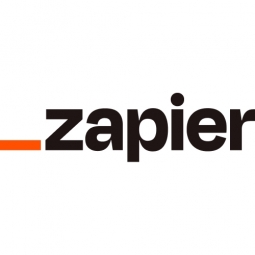
|
Automating Lead Management: A Case Study on Digital Marketing Firms
Digital marketing firms are often faced with the challenge of managing new leads efficiently. The traditional method involves manually checking Facebook Lead Ads every hour or two, or exporting a list of new leads at the end of each day for follow-up. This process is not only monotonous but also time-consuming, leading to delays between a lead entering their information and the firm's response. The firms also have to monitor mentions of their brand on social media and across the internet, which is a full-time job in itself. Keeping an eye on competitors adds to the workload, making it almost impossible to track new mentions without missing some. The firms needed a solution that would automate their lead workflow, eliminating the need for manual work and ensuring quick response to new leads.
|
|
|

|
Lenovo Computes Supply Chain and Retail Success with DataRobot
Lenovo, a multinational technology company, was facing a challenge in balancing supply and demand for its products among Brazilian retailers. The company aimed to predict the sell-out volume, the number of units of a product that retailers sell to customers, but was constrained by resources. The team had started developing R code to predict sell-out volume, with a goal to have it updated weekly for their top ten retail customers. However, with only 2 people writing 1,500 lines of R code for one customer each week, reaching their target of predictions for ten customers each week was impossible. The team needed to either invest in more data scientists or find a tool that could automate all the modeling and forecasting steps.
|
|
|

|
Intelligent Supply and Demand Planning at StarKist: A Case Study
StarKist, a leading food company in the United States, was facing significant challenges in managing its supply chain. The demand planning function and the financial planning and analysis team were using separate sets of spreadsheets to track inventories and orders for 100 key accounts and 200 product SKUs. This disjointed approach was not only inefficient but also prone to errors, especially when dealing with new SKUs, discontinued SKUs, and customer allocations. The supply chain's reliance on an SAP ERP for production planning resulted in a massive amount of data accumulating in a complex spreadsheet that was becoming increasingly difficult to maintain. Furthermore, the lack of real-time data between the supply planning and demand planning functions made it impossible to conduct in-depth analysis of SKU traffic or to quickly respond to volatile market conditions.
|
|
|

|
Keller Williams: Revolutionizing Real Estate with IoT
Keller Williams, the world's largest real estate technology franchise, was driven by a desire to foster meaningful relationships and provide a seamless user experience for agents and customers. They wanted to create a platform that would allow agents and customers to navigate the real estate market with ease. However, they faced the challenge of finding a solution that was highly flexible and customizable, as opposed to a Software as a Service (SaaS) suite that did not allow for customization. The company needed a solution that would enable them to manage contacts, marketing profiles, campaigns, and listings effectively.
|
|
|

|
Improving Customer Satisfaction Rates with IoT: A Case Study on GE Healthcare
GE Healthcare, a global leader in medical technology and digital solutions, faced several challenges in managing support requests from its channel partners. The company provides medical equipment and services to clinicians worldwide, and when a piece of equipment is down, the channel partner may reach out to GE Healthcare for help. Capturing and managing these support requests was a complex task, often leading to hours spent searching for information. Additionally, GE Healthcare needed to ensure that channel partners were delivering the same level of support to their customers as those supported directly by GE. However, with their existing customer support process, GE managers had little visibility into support requests. They were unaware of the number or status of requests and who was responsible for each. This lack of process control and visibility into channel partners led to the realization that a change was necessary.
|
|
|

|
Israeli Government Enhances Infrastructure Project Coordination with Creatio’s No-Code Platform
Israel is currently undergoing the largest infrastructure development in its history, with projects ranging from lite-trains and underground trains to cross-country highways and heavy railways. However, coordinating these large-scale projects in a small country like Israel, where resources are limited, is a significant challenge. Each project requires multiple approvals from various entities, including the Israel Water Company, the Israel Electric Corporation, and several federal bodies. This process was previously handled manually, leading to inefficient paperwork, misunderstandings, and delays in the coordination process, which in turn delayed project delivery. The Israeli government recognized the need for a more efficient system to manage the coordination of these infrastructure projects.
|
|
|

|
Automating Real Estate Operations: A Case Study on Reducing Follow-Up Time by 90%
In the highly competitive real estate market, quick response to leads and efficient management of these leads are crucial. Jonathon Kerester, the managing broker at Realty Investment Advisors (RIA), was faced with the challenge of connecting email marketing and customer support tools. He needed a system where Zendesk tickets would be automatically filled out whenever leads subscribed to specific newsletters in Mailchimp or updated their profiles with RIA. The challenge was to reduce the time spent on cold calling and to connect with leads faster. The goal was to automate the initial follow-ups and lead management to increase efficiency and productivity.
|
|
|

|
Automation in Insurance: How SelectQuote Saved $15,000
SelectQuote Insurance Services, a company providing insurance quotes, was faced with the challenge of providing reliable insurance quotes to clients in an efficient manner. The company wanted to streamline the process of cross-application functions without the need for a developer to build a series of APIs. The process involved a potential client filling out a form with their phone number, assigning the client to a SelectQuote agent, pulling quotes from SelectQuote's vendors, and then sending the quotes to the client. The company wanted to automate this process to save time, money, and resources.
|
|
|

|
Revitalizing Chang Beer's Brand Through IoT Advertising Strategy
Chang, a popular beer brand in Thailand, was facing a significant challenge. The brand had not updated its advertising or packaging since its inception twenty years ago. As a result, it had earned the reputation of being the 'old man's beer' and was rapidly losing market share to more modern competitors. The beer, the bottle, and the brand were all in desperate need of a change. The challenge was not just about rebranding, but also about reconnecting with a younger, more modern audience and changing the perception of the brand.
|
|
|

|
AirAsia's Digital Transformation with Google Cloud: Enhancing Pricing, Revenue, and Customer Experience
AirAsia, a leading airline in the Asia Pacific region, aimed to become a 'data-first' business and a digital airline. The company needed technologies and services that could capture, process, analyze, and report on data, while delivering value for money and meeting its speed and availability requirements. The airline also wanted to minimize infrastructure management and system administration demands on its technology team. AirAsia realized that only a cloud service could meet its needs and began evaluating the market. The company also faced challenges with its legacy on-premises directory as it expanded to new markets and regions. Managing multiple servers across a number of on-premises data centers and the public cloud proved costly and time-consuming.
|
|
|

|
ACH Colombia's Transfiya: Revolutionizing Financial Transactions with Google Cloud
ACH Colombia, a financial services company, was established in 1997 with the aim of providing solutions to the financial industry and promoting financial inclusion among users. Over the years, the company has delivered several services, but it identified a new need among Colombians: the ability to send, receive, and request money easily and immediately, without having to leave their homes. This need became even more pressing in the context of social distancing and preventive confinement measures against the spread of COVID-19. Furthermore, ACH Colombia faced the challenge of delivering a 24/7 service across all regions of the country, and needed to ensure that the service was accessible to unbanked users. The company also wanted to promote the use of e-money to reduce costs, decrease the use of cash, and increase the security of transactions.
|
|
|
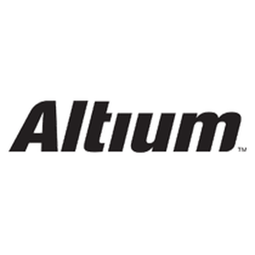
|
Transforming PCB Design with Altium Designer and Altium 365: A Case Study
Small PCB design firms often face the challenge of limited access to affordable, comprehensive software tools. These tools are essential for designing, co-designing, sourcing parts, and sharing projects at each stage of the development cycle. Many available tools are incomplete, requiring additional modules that increase complexity and costs. Matthew Lightsey, founder and principal designer of Granite Summit Designs, experienced this challenge firsthand. His firm specializes in designing custom PCBs for various industries, including commercial, industrial, aerospace, and defense. When starting his own design firm, Matt did not want to compromise on professional tools. However, he found that more comprehensive solutions came with a higher price tag, while cheaper solutions were inadequate for professional use.
|
|
|

|
Anduril's Innovative Approach to Defense Technology with IoT
Defense technology company, Anduril, was facing a significant documentation challenge. With several core product platforms commercially available and many more in development, the company was struggling to keep its documentation up-to-date. The traditional method of using flat PDF documents with screenshots from CAD software was becoming obsolete as products evolved. Moreover, the creation of these documents was dependent on mechanical engineers, leading to bottlenecks and inefficiencies in the process. This outdated method of documentation was causing delays and resulting in stale data. Additionally, the company's business development representatives were limited in their ability to respond to product questions and requests from customers due to the restrictive nature of flat documents and screenshots.
|
|
|
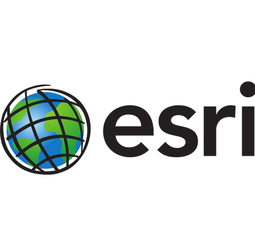
|
Ohio City Leverages IoT for Data Transparency and Personnel Decisions during Pandemic
The City of Akron, Ohio, faced a significant challenge when the COVID-19 pandemic hit. With a workforce of about 2,100 full-time and seasonal employees across various divisions, city officials had to make quick decisions to protect not only residents but also its employees. The initial stay-at-home orders issued in March 2020 necessitated accurate, real-time data to make important decisions on how to bring employees back to work and support active city employees. The city needed to determine which employees were essential and nonessential, manage benefits for essential employees, and track leave types to analyze its impact on staffing levels and overtime costs. However, the city's legacy applications made access to real-time data for decision-making difficult. The process of obtaining personnel data was time-consuming and involved several steps, including requesting reports from the appropriate staff member or department or directly accessing the database to pull data into a CSV format.
|
|
|

|
Embracing Network Functions Virtualisation: A Competitive Edge for Datanet
Datanet, a UK-based data hosting and connectivity services provider, was facing several challenges that necessitated a change in its data centre network. Firstly, the network equipment was nearing its end-of-life, raising concerns about its long-term viability. Given that Datanet's customers required highly reliable services with minimal downtime, a future-proofed and high availability network was essential. Secondly, as Datanet's services grew more successful and the volume of backup and recovery services increased, it needed to upgrade its network capacity from 1 Gbps to 10 Gbps to keep pace with traffic volumes. Upgrading the existing equipment would have required a substantial investment, almost equivalent to replacing it completely, prompting Datanet to look for alternative solutions. Lastly, Datanet had experienced a distributed denial of service (DDoS) attack that its previous vendor had struggled to deal with satisfactorily. It was keen to deploy comprehensive security throughout its new infrastructure as a fundamental design feature, rather than an add-on.
|
|
|

|
Schüttflix's Digital Transformation with Fivetran in the Construction Industry
Schüttflix, a German logistics start-up, aimed to disrupt the traditional construction supply chain by digitizing the industry, which was primarily reliant on pen and paper processes. The company's mission was to enable data-driven decision-making by providing stakeholders with accurate and timely data. The challenge was to build a modern data stack that could tap into key data sources efficiently and reliably. Alexander Rupp, Head of Data and Business Intelligence at Schüttflix, was tasked with evaluating connectors that could meet these requirements.
|
|
|

|
Propelling Digital Transformation with DSS
The company soon realized that for organizations in the banking and insurance industries, security was a top-most concern. As an all-in-one communication and document workflow platform, Totaldocs needed a way to allow these customers to send and store documents such as bank statements, policies, and billings – which must remain confidential.Solution RequirementsGive customers the ability to apply legally recognized digital signatures, with the secure electronic delivery and AATL Long Term Validity (LTV) to meet archiving requirements for documents.Easily integrate with the existing Totaldocs cloud platform to ensure a seamless end-user experience.Partner with an experienced, globally recognized Certificate Authority with a strong understanding of the document signing market.
|
|
|
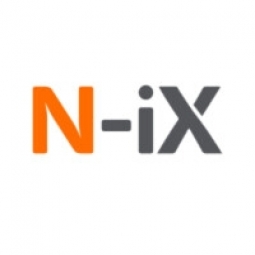
|
Revolutionizing Cancer Treatment: A Case Study on Cure Forward's Digital Platform
Cure Forward, an innovative healthcare platform, aimed to revolutionize the traditional approach to cancer treatment by building a network that connects patients with each other and with clinical trial providers. The challenge was to create a digital solution that would enable cancer patients to explore clinical trials as a treatment option. The platform also needed to provide access to educational information based on a user’s molecular diagnostic test results and facilitate communication between cancer patients and survivors. The client required a complex 5 in 1 web application with a simple and intuitive UX design, allowing patients to effortlessly add their details to the database. The design had to be engaging and encouraging, considering the social aspect of the product.
|
|
|
---nasdaq--amzn_14.jpg)
|
Yieldmo Leverages AWS for Real-Time Ad Engagement Data Delivery
Yieldmo, a mobile-advertising marketplace, was facing a challenge in enhancing its measurement of user interactions for its ad campaigns. The company needed to capture user behavior in real time, across each ad pixel for billions of ad impressions at millisecond granularity. This was crucial for their sessionization process, which involved the collection of user interactions, known as micro-interactions, performed on Yieldmo’s ad units within a user session. The company was also planning to launch a new data platform that would provide in-depth insights into customer engagements. However, capturing hundreds of billions of micro-interactions presented a technical challenge as it would increase the number of requests coming in and require adding many more proxy servers to capture and analyze all these events. Implementing a traditional solution would be time-consuming, expensive, and require a large amount of storage and compute power.
|
|
|
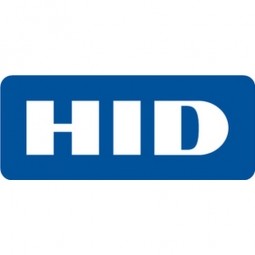
|
Modernizing the Angolan Government Agency Voter ID Program with IoT
The Angolan government agency was seeking to upgrade its voter ID system ahead of the elections in Q3 2017. The aim was to increase the number of citizens eligible to vote by issuing voter IDs in a short time frame. The existing voter ID printing system needed to be replaced with a solution that reduced costs significantly by providing mobility and streamlining operational processes. The key selection criteria included a faster throughput secure issuance printer solution, a de-centralized secure issuance solution to increase the number of citizens enrolled, a Wi-Fi based secure issuance printing solution for increased convenience, improved reliability of the printing solution, a lightweight, easy-to-use portable solution for collecting citizens’ data and issuing voter IDs for citizens residing in remote areas, and high levels of security to combat fraud and minimize the number of counterfeit voter IDs.
|
|
|

|
Ride-Sharing Platform Development for Facedrive
Facedrive, a Canadian ride-sharing platform, needed to develop a comprehensive solution from scratch. This included back end, front end, and mobile development for both iOS and Android platforms. The development team was tasked with implementing GPS positioning and route navigation, integrating with a payment platform, and creating a complex ride-sharing logic. They also needed to create an intuitive UX design. The challenges included updating the drivers' location information in real-time, estimating time and distance for each ride, synchronizing multiple servers, ensuring payment security through Stripe API integration, developing the ride-sharing logic, calculating rates for electric, hybrid, and gas vehicles, and ensuring smooth operation across multiple apps and platforms.
|
|
|

|
Accelerating Monte Carlo Simulations with Quantum Computing: A BBVA and Zapata Case Study
BBVA, a Spain-based financial institution with over €662 billion in assets and 83 million customers across more than 30 countries, relies on complex calculations for risk analysis and pricing of financial products. Post the 2008 Financial Crisis, regulations necessitated banks to evaluate credit risk and stress-test financial scenarios. Typically, this risk analysis is performed using Monte Carlo simulations, a highly complex, expensive, and time-consuming process that must account for all possible credit default scenarios. Any enhancement in the performance of these simulations would directly affect the daily operational costs, financial product pricing, and risk analysis.
|
|




